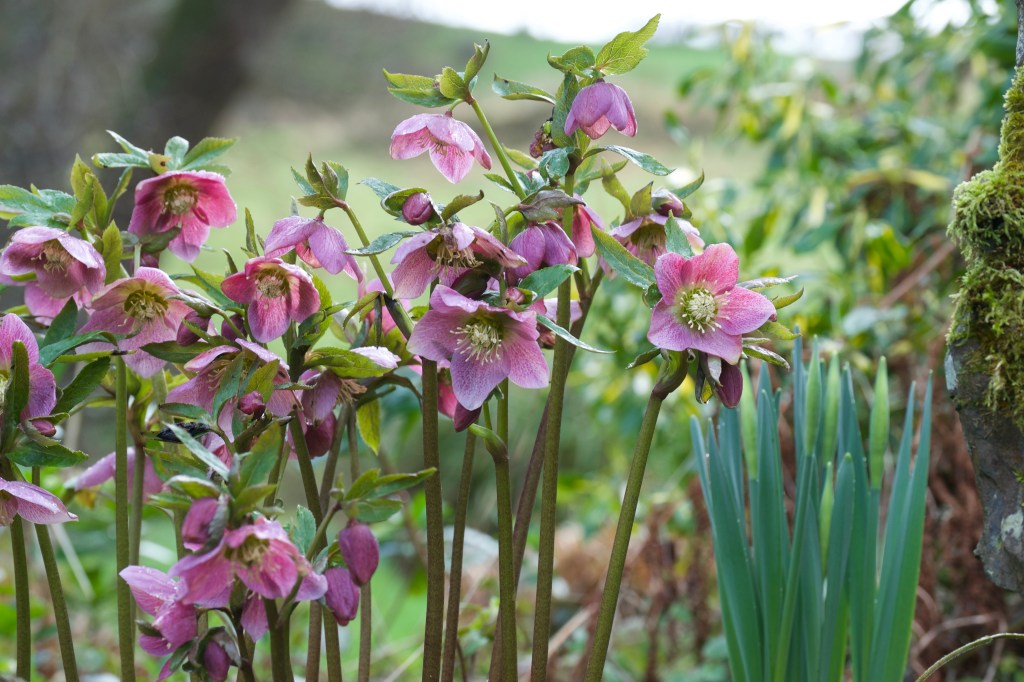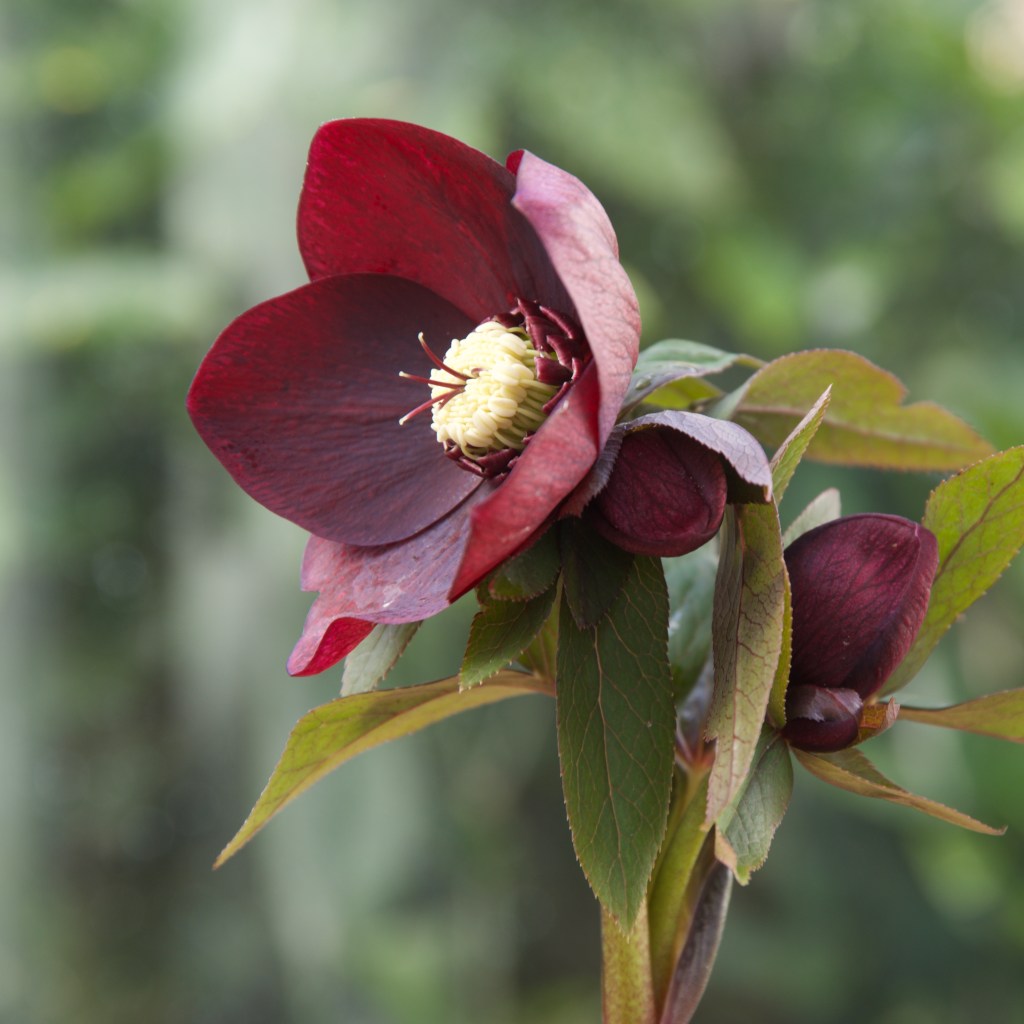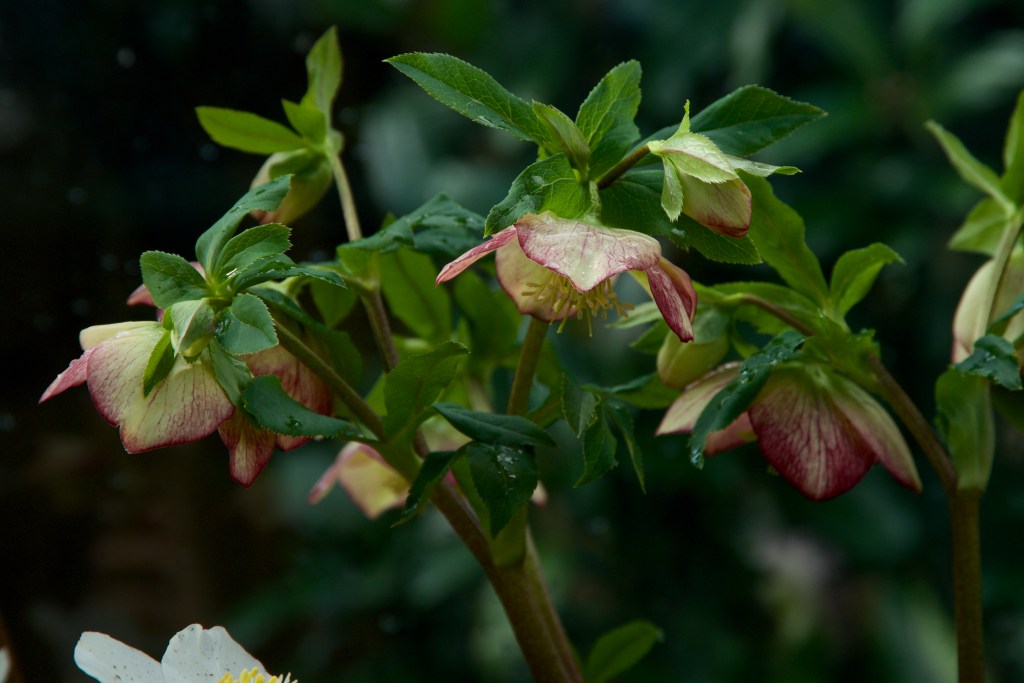For many reasons, the hellebore is my favourite winter flowering plant. Although I love a swathe of crocus or a blanket of snow drops along a woodland walk (and their impact is undeniable), they are so short lived, entertaining us for just two to three weeks each year. Winter flowering shrubs provide a great backdrop, a hint of colour and usually smell divine; invaluable, but they have an understated impact. The hellebore has so much more, a definite front of house plant with its dramatic entry in an often barren garden, prolific and long flowering habit and show boating of colour in the darkest months of the year.

From January to March these super plants entertain us with their fantastic qualities, from the pure white of helleborus niger, to the plethora of shades produced by the highly popular helleborus x hybridus, which range through pink, peach, crimson to the almost black. With a choice of single and double inflorescence they are simply lovely.

Helleborus x hybridus , with the most variability, are easy to grow given the right position in the garden. Thriving in semi-shaded areas in rich soil, care should be taken to ensure that they don’t dry out completely and are fed each year with organic matter; they will then thrive and brighten up the gloomier corners of the winter garden with striking effect.
An important care aspect for hellebores is the removal of leaves after they have finished flowering – they are evergreen, but can develop leaf spot which will transfer to new growth if unchecked.

For the amateur gardener, propagation is most successful by dividing plants between April and November as according to Graham Rice (writing in this February’s ‘The Garden’), most modern hybrid plants do not produce viable seeds. This may explain why an attempt I made to cross breed two colours a couple of years ago was unsuccessful, but I am mystified as to how professional nurseries manage to do it!
The breeding of new hellebores is indeed a fascinating subject – Mike Byford of Hazles Cross Farm Nurseries informs us that it is not possible to produce a named cultivar from helleborus x hybridus as new plants grown from seed may be highly variable. This explains why most of these plants do not have names, the labels merely indicate the colour combination/style.

I’ve a favourite outing when in Wales – Farmyard Nurseries in Llandysul. They have a Helleborus x hybridus breeding programme which is extremely successful (their plants must produce seed?), it’s a real treat to visit and make new selections in February.
This stunning Helleborus x hybridus double picotee bought two years ago from Farmyard has now formed a decent sized clump at the edge of the pond – for me it’s one of those special plants you can’t help but keep looking at!

This February, we brightened up a rather wet and windy day with another visit and I chose two new varieties for our garden in Walsall, both primrose, one with a lovely red speckle and the other with red veining to the petals, both gorgeous!

The hellebores in our gardens have now been flowering for almost five weeks and are showing no signs of slowing down. If you haven’t tried growing them yet, it’s time to start – no garden should be without them!



Lovely piece Phao. My favourite too.
LikeLiked by 1 person
Thanks Ros x
LikeLike
Wow those pivoted Hellebores are wonderful. I’m always in great wonder at these plants especially now there are so many varieties to choose from. Thanks for showing us your selection they’re beautiful. I’m definitely seeking out more for the garden.
LikeLiked by 1 person
It’s a pleasure to share them!
LikeLike
Your post was like a breath of fresh (spring) air! I’ve yet to add Hellebores to my garden but after seeing your beautiful photos, I think the time has come to grow some of these early-blooming beauties!
LikeLiked by 1 person
Oh Nancy, that’s such a lovely response! Thanks very much and good luck with the hellebores!
LikeLike
Beautiful! They’re my favourites at this time of year too. 🙂
LikeLiked by 1 person
Thanks Ann, they’re such a pleasure!
LikeLiked by 1 person
Thanks Ann, your piece is a wonderful tribute to blogging and has cheered me up this morning xx
LikeLike
I love your plum hellebore – such elegant stems too.
LikeLiked by 1 person
Yes, it is a an artful plant!
LikeLike